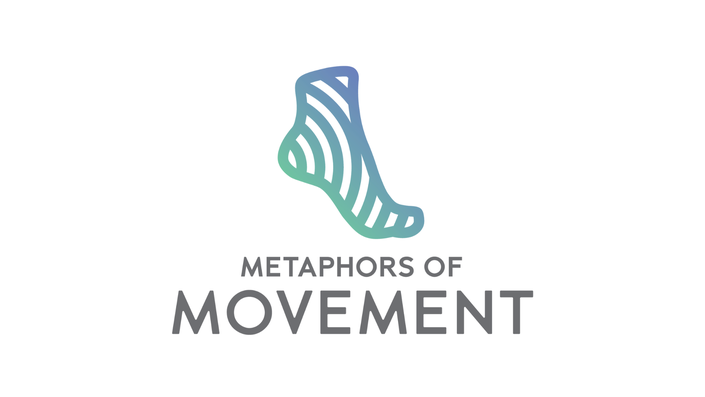
Metaphors of Movement Level 1
Metaphors of Movement Level 1
For thousands of years metaphor has been recognized as a powerful tool for human communication and storytelling. Now Andrew T. Austin of the UK has developed a sophisticated and fundamentally new model for uncovering and engaging the metaphors we already use. These unconscious metaphors for moving through life impact who we are and what we’re able to do (or not do).
Learn not only how to uncover your own metaphors, but how to engage them at a physiological and neurological level — a completely new approach to overcoming stuck states and creating effective movement towards our personal goals.
The format of this course is fun and experiential. Your trainer Mark Andreas will introduce each topic, share examples, and demonstrate with volunteers or guided exercises. You’ll be encouraged to explore and practice each element yourself before continuing on.
The content from this video course is taken from a live-online Training with Mark Andreas, and edited into bite-sized videos under 15-minutes (many of them under 5 minutes). This makes it easy to fit into your busy schedule, and easy to find and review any specific content area you want to refresh. (It also means you get to benefit from the rich group discussion and questions from the original training participants.) If you watch 2 short videos per day, you’ll complete the course in just 1 month.
Finally, additional content has been added, such as a recorded client session demonstration of the Metaphors of Movement process with someone who has no prior experience of the method. The course also comes with a comprehensive manual for reference AFTER you have the experience yourself. The manual also includes many Metaphors of Movement client session examples, so you can see this put into practice.
What You'll Learn In Level I
Learn the structure of the Metaphors of Movement process. We’ll go from “how do I access my metaphor?” through exploring how to gain clarity and insights based on what you find. You’ll have lots of guidance and help as you explore your subjective experience in a new way. Most important, you’ll have ample opportunity to explore metaphors for your own life situations. It can be surprising what we can learn from our own inner metaphors. Many “ah-ha’s” emerge as we go through the course of the training.
Sessions 1 & 2
- How to go from “the content” to “the metaphor.”
- How to elicit the metaphorical landscape.
- Discover how to match someone’s metaphor using common idioms. (It’s simpler than you might think, and lots of fun.)
- Learn how matching with idioms can create deep rapport and insights.
Sessions 3 & 4
- Learn to recognize the main categories of metaphors, and what to do with each type. You will learn:
- The Obstructions: external rules and values.
- The Containers: container metaphors, inherited status, families and long term problems.
- The Burdens: responsibilities and guilt.
- The Contaminations: shame and shame avoidance.
- The Heights: status.
- The Bubbles: beliefs and values.
- Learn how outcomes are represented in metaphor.
- Learn the most common mistakes people make with metaphor work, and what to do instead.
- Tips for exploring a metaphor to “know where you are” and gain clarity on your direction.
- Specific guidance on what to do and not do in considering a change.
9 hours, 12 minutes of video, available streaming anytime.
Your Instructor

Mark Andreas lives in Boulder CO, where he runs a private practice offering NLP Change Coaching to individuals around the world. Meeting over Zoom, Mark helps people resolve limitations and achieve life-goals using NLP, Core Transformation, Metaphors of Movement, the Wholeness Work, and other methods for personal transformation and development (www.markandreas.com). Mark also trains NLP internationally, including Metaphors of Movement Levels 1 & 2, and the Advanced Core Transformation course, and Core Transformation Coach Certification course (www.AndreasNLP.com). Mark is author of the books Sweet Fruit from the Bitter Tree: 61 stories of creative and compassionate ways out of conflict and Waltzing with Wolverines: finding connection and cooperation with troubled teens.
Course Curriculum
-
PreviewVideo 1: Where Are We Starting? (8:23)
-
PreviewVideo 2: Group Guided Experience: Where Are We Starting? (13:40)
-
PreviewVideo 3: Eliciting the Metaphorical Landscape (4:56)
-
StartVideo 4: Demo & Exercise: Eliciting the Metaphorical Landscape (7:19)
-
StartVideo 5: Sharing Metaphors post Exercise (6:27)
-
StartVideo 6: Boundary Violations (2:16)
-
StartVideo 7: Right and Left Brain (12:05)
-
StartVideo 8: Boundary Violation of Dissociated Identity (5:19)
-
StartVideo 9: Idioms! (14:11)
-
StartVideo 10: Idioms: "At the End of her Rope" (9:35)
-
StartVideo 11: Idioms: "Ready to Launch?" (3:47)
-
StartVideo 12: Idioms: "A Grave Situation" (1:34)
-
StartVideo 13: Idioms: "In a Head Spin" (4:59)
-
StartVideo 14: Idioms: "Prepared to Hack It" (2:55)
-
StartVideo 15: Discussion & Review of Idioms Exercise (3:59)
-
StartVideo 16: Feedback from Idioms Exercise (8:12)
-
StartVideo 17: Discussion (5:27)
-
StartVideo 18: Why Idioms? (6:56)
-
StartVideo 19: What if they Give no Metaphor? (5:47)
-
StartVideo 20: Simile vs Metaphor (1:32)
-
StartVideo 21: Idioms of Cause and Effect (9:01)
-
StartVideo 22: Metaphors from the Group: Idioms of Cause and Effect (11:59)
-
StartVideo 23: Exercise: Idioms of Cause and Effect (1:04)
-
StartVideo 24: Idioms Discussion (2:49)
-
StartVideo 25: Identity in Metaphor (11:01)
-
StartVideo 26: Exercise: Identity in Metaphor (0:42)
-
StartVideo 27: Identities Discussion (5:29)
-
StartVideo 28: Demo: Strange Road (6:47)
-
StartVideo 29: Demo: Movement (8:15)
-
StartVideo 30: Full Metaphors of Movement Process (6:21)
-
StartVideo 31: Exercise: Full Metaphors of Movement Process (3:47)
-
StartVideo 32: Discussion (5:21)